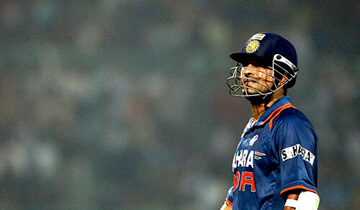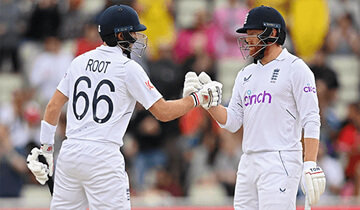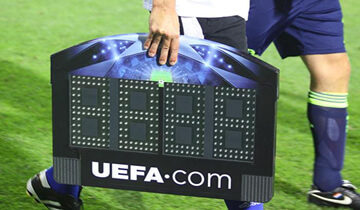WAR, or Wins Above Replacement, is an advanced baseball statistic that attempts to summarize a player’s total value in terms of additional wins they contribute to their team compared to a replacement-level player. There are two main versions of WAR used in baseball analysis - fWAR, calculated by the website Fangraphs, and bWAR/rWAR, calculated by Baseball-Reference. While the two metrics use different formulas, they attempt to measure the same thing - a player’s overall contributions in all facets of the game.
Popularity and Use of WAR
Though relatively new compared to traditional stats like batting average and ERA, WAR has rapidly grown in popularity and use over the past decade. It is appreciated by stat-focused fans and analysts for encapsulating a player’s total value across batting, baserunning, and defense into one handy metric. This allows easy comparison of players across positions and eras. WAR is commonly cited in MVP debates, free agent valuations, and Hall of Fame cases.
Both fWAR and bWAR have scaled such that an increase of +1 WAR represents 1 additional win contributed by that player over the course of a full season compared to an average minor leaguer or bench player. A WAR of 5-6 is considered All-Star level, while 8+ is MVP caliber.
Calculating WAR - Offense
A major component of WAR is measuring a player’s offensive contributions. This is done by comparing their production to league average and assessing how many more runs they generate for their team. Metrics like OBP, SLG, wOBA, and wRC+ help estimate a player’s runs above average via their hitting. Stolen bases, caught stealings, and other baserunning is also accounted for. Adjustments are made for ballpark and league offensive levels.
Calculating WAR - Defense
Fielding is the other half of the WAR calculation. Defensive metrics like UZR, DRS, and Inside Edge fielding data are used to determine how much value a player provides with their glove. Good fielders can add wins with their defense, while poor ones can detract value. Catchers also get credit for things like framing and controlling the running game. Most versions of WAR include a positional adjustment, giving more value to premier fielding positions like catcher and shortstop.
WAR in Summary
While not a perfect metric, WAR has proven itself as a useful catch-all stat to assess player value. It helps fans and analysts quickly judge players across history, distilling their total contributions down to a single number. With advanced analytics becoming more prominent in baseball decisions, expect WAR to continue growing as a tool for GMs, awards voters, and fans debating player greatness. The next time you want to determine the MVP or compare an aging veteran to a rookie call-up, consult their WAR totals for a snapshot of their overall value.
Calculating WAR
Position Players vs Pitchers
Wins Above Replacement (WAR) is calculated differently for position players and pitchers to account for the differences in their contributions. The basic idea is to quantify how many more wins a player contributes compared to a hypothetical replacement-level player at their position.
For position players, the main factors considered are:
- Batting runs
- Base running runs
- Fielding runs
- Positional adjustment
For pitchers, the main factors are:
- Innings pitched
- Earned run average
- Fielding Independent Pitching (FIP)
- Leverage index
- Positional adjustment
The formulas have similarities in comparing to replacement level and making positional adjustments, but differ primarily around defensive metrics for position players and the choice of ERA vs FIP for pitchers.
WAR Formulas for Position Players
Both versions of WAR rely on linear weights batting runs and base running runs. The key differences are in how they measure defensive value.
fWAR uses Ultimate Zone Rating (UZR), adjusting for the positional difficulty.
bWAR uses Defensive Runs Saved (DRS) along with range factor to estimate defensive runs relative to others at the position.
So fWAR relies purely on play-by-play statistical modeling, while bWAR incorporates some subjective evaluation of “runs saved”.
WAR Formulas for Pitchers
For pitcher WAR, the stats used fall into two buckets: runs allowed vs expected runs.
fWAR uses FIP, which estimates ERA based on strikeouts, walks, home runs allowed, and hit batters. It aims to isolate the outcomes pitchers have most control over.
bWAR simply uses runs allowed, including unearned runs. This credits pitchers for limiting total runs with help from defense.
Both versions account for the number of innings pitched and leverage index. fWAR prefers FIP to better compare pitchers skills, while bWAR uses runs allowed to capture total value.
Big WAR Differences - Examples
WAR discrepancies most often arise from differences in evaluating defense and pitcher workloads.
In 2013, fWAR rated Gerrit Cole much lower (2.0) than bWAR (4.2) due to FIP (3.22) being higher than his ERA (2.91). FIP suggested he was lucky, while ERA valued his results.
Conversely in 2016, Kyle Hendricks had a much higher fWAR (6.7) than bWAR (4.0) thanks to a super low FIP (2.71) compared to his ERA (3.06)
On defense, someone like 2016 Adam Eaton had a big fWAR (6.2) advantage over bWAR (4.7) thanks to UZR favoring his work more than DRS. The metrics valued his range differently.
So while the WAR frameworks are similar, components like defensive metrics and whether to use FIP vs ERA create significant differences in some cases.
Interpreting and Using WAR
Put WAR values in context
Wins Above Replacement (WAR) is a popular statistical measure in baseball that attempts to summarize a player’s total contributions in one number. While WAR values give a useful snapshot of performance, it’s important to put the numbers in proper context:
- 0-1 WAR = Scrub/replacement level
- 1-2 WAR = Role player/bench player
- 2-3 WAR = Solid starter
- 3-4 WAR = Good player
- 4-5 WAR = All-Star
- 5-6 WAR = Superstar
- 6+ WAR = MVP candidate
In general, think of WAR tiers rather than focusing too much on decimal places. A 4.2 WAR player is not necessarily much better than a 3.8 WAR player - both are good players worthy of a starting job. The tiers help give a quick shorthand of where players stand.
WAR as a useful guide, not a perfect stat
While WAR sums up a lot of information into one number, it is not a perfectly precise stat. WAR uses defensive metrics that still have uncertainties, and offensive value is shaped by the model (like how clutch hitting is valued). The inputs that go into WAR are constantly being refined.
So WAR values are best used as general guides of player ability, not absolute fact. Comparing within tiers makes more sense than splitting hairs between two close WAR values. Use common sense - a player with a 3.9 WAR season is likely not far different in ability than a 4.1 WAR teammate.
Applications of WAR
Despite some limitations, WAR remains a valuable tool for things like:
- Player evaluation - Judging a player’s overall contributions or value compared to teammates
- Historical comparisons - Comparing players across eras; identifying best seasons
- Hall of Fame cases - Total WAR helps identify player value over long careers
- Free agent analysis - Projecting future performance using WAR baseline
- Team performance - Combining players’ WAR helps evaluate roster construction
While WAR alone doesn’t provide all the answers, it gives a helpful starting point in analysis. Used wisely in proper context, WAR can aid comparison and evaluation.
Criticisms and limitations
Some common critiques of WAR include:
- Defensive uncertainty - Metrics are imperfect and subject to variation
- Clutch hitting not valued - Walk-off hits count the same as 9th inning down 10 runs
- “Intangibles” like leadership not measured - WAR analyzes on-field play, not off-field traits
- Formula differences across sites - Fangraphs vs. Baseball-Reference WAR vary in inputs
In the end, WAR simplifies baseball’s complexity into one number. No statistic can capture every aspect of contribution and value. WAR is best used reasonably, recognizing players provide value in ways not fully encapsulated in one metric.
Interpreting and Using WAR
Put WAR values in context for scrubs, role players, solid starters, All-Stars, etc. based on fWAR
The Wins Above Replacement (WAR) statistic is a useful tool for evaluating players in Major League Baseball. Here is a general guide for interpreting fWAR values:
- 0-1 WAR = Replacement level. A player who could easily be replaced.
- 1-2 WAR = Role player or bench player. A solid contributor in a part-time role.
- 2-3 WAR = Average starter. Solid everyday regular or middle rotation starter.
- 3-4 WAR = Good player. Better than average starter, potential All-Star.
- 4-5 WAR = All-Star. Excellent player worthy of All-Star consideration.
- 5-6 WAR = Superstar. Among the elite players in baseball.
- 6+ WAR = MVP candidate. Reserved for the very best in the league.
While WAR provides a snapshot of overall value, context still matters. Factors like position, age, contract status, and trajectory can shape how WAR values are interpreted for an individual. But in general, this scale helps categorize players across the spectrum of baseball ability.
Note WAR is a useful guide but not perfectly precise, general tiers more informative than decimal places
It’s important not to put too much emphasis on WAR’s decimal places. The difference between a player with 4.2 WAR and 4.7 WAR is less significant than it may appear. General tiers are more informative than small differences in WAR values.
Advanced defensive metrics in particular still have uncertainties from year to year for players. Offensive WAR also depends on how factors like clutch hitting ability are valued. So two players with similar WAR values should be considered broadly comparable in overall production.
While WAR aims to summarize total player value, it remains an estimate with room for interpretation. Used judiciously, WAR effectively guides player evaluation and historical comparison, but should not be treated as a perfect, precise metric.
Discuss applications like player evaluation, historical comparisons, free agent analysis
WAR has many applications in evaluating and analyzing baseball players, such as:
- Player evaluation: WAR gives a snapshot of a player’s overall contributions - both hitting and defense - to determine their value and ability.
- Historical comparisons: WAR allows comparing players across eras to identify the best seasons of all-time, compile leaderboards, and analyze Hall of Fame cases.
- Free agent analysis: Projecting future WAR can help estimate a free agent’s future production and determine contract value. 1 WAR is valued around $8-10 million on the open market currently.
- Team roster construction: Adding up players’ WAR values gives a useful baseline for evaluating a team’s talent level and depth. Teams aim for around 50 WAR in total each season.
While WAR alone cannot capture every subtlety, it serves as a valuable starting point for analysis. WAR distills baseball’s complexity into a handy singular metric to aid comparison and evaluation involving players and teams.
Mention limitations/criticisms like defensive uncertainty, clutch hitting, leadership not measured
Some fair limitations and criticisms of WAR include:
- Defensive metrics involve some uncertainty from year to year. Outfield defense in particular is hard to perfectly quantify.
- Clutch hitting ability is not really captured in WAR calculations. Walk-off hits count the same as low leverage 9th inning hits per WAR.
- “Intangible” traits like leadership, chemistry, and grit are not measured by WAR. The statistic focuses solely on tangible on-field production.
- Different versions of WAR from Baseball-Reference and Fangraphs use varied inputs and formulas, leading to disagreement in some cases.
In the end, WAR cannot incorporate everything. No single statistic perfectly summarizes a player’s total value. WAR is best used reasonably as part of a well-rounded evaluation, not as the be-all, end-all final word on a player’s worth.
Top WAR Contributors
Career Leaders in WAR
When evaluating the overall value of MLB players across history, Wins Above Replacement (WAR) has become a popular all-encompassing stat. Both FanGraphs (fWAR) and Baseball-Reference (bWAR) provide their own calculations of WAR to quantify player value. Some of the career leaders in WAR include legends like Babe Ruth, Willie Mays, and Barry Bonds.
Babe Ruth tops the fWAR leaderboard with 177.7 wins over his career. Meanwhile, his bWAR sits at 182.5, also #1 all-time. Other fWAR leaders include Cy Young (170.3), Walter Johnson (165.6), and Willie Mays (164.4). The bWAR leaders look similar with Cy Young (168.5), Walter Johnson (165.6), and Barry Bonds (162.8) following Ruth.
WAR Totals for Recent Stars
More recently, we’ve seen elite players like Albert Pujols, Alex Rodriguez, and Miguel Cabrera enter the top WAR totals with both versions.
Pujols has accrued 100.4 fWAR and 100.1 bWAR over his legendary career. Rodriguez posted 117.8 fWAR and 117.5 bWAR. Cabrera currently stands at 71.5 fWAR and 69.5 bWAR.
Meanwhile, active superstars like Mike Trout and Clayton Kershaw are quickly rising up the WAR leaderboards. Trout already sits at 72.6 fWAR and 71.3 bWAR despite being just 30 years old. Kershaw has accumulated 69.6 fWAR and 63.2 bWAR at age 34.
Hall of Famers Career WAR
The WAR stat also allows for cross-era comparisons of Hall of Famers. For example, Stan Musial posted 128.1 fWAR and 124.1 bWAR in his career. Comparably, Willie Mays put up 149.9 fWAR and 156.2 bWAR. From recent inductees, Chipper Jones sits at 85.1 fWAR and 85.0 bWAR.
So while the specific WAR calculations differ, both fWAR and bWAR help quantify player value across eras to compare legends like Ruth, Mays, Musial, and more. Advanced stats allow modern fans to assess players both past and present.
Conclusion
WAR has become a preeminent statistic in baseball analysis, providing a handy singular metric to quantify player value. Despite limitations like defensive uncertainty and inability to measure “intangibles,” WAR gives fans and analysts an effective starting point for evaluating players. While the two main versions from Fangraphs and Baseball-Reference differ in their inputs and calculations, they aim to measure the same true talent. Used judiciously, WAR enables convenient historical comparisons, free agent analysis, Hall of Fame cases, and roster construction evaluation. Though not a perfect encapsulation of player worth, WAR has proven itself a useful proxy for total contributions. With advanced analytics becoming more prominent, expect WAR to continue growing in popularity and utility. While old-school stats still have value, WAR manages to capture both offensive and defensive value in one number. With contextual interpretation, it promises to remain a valuable guideline, though not the final word, in baseball analysis.







































